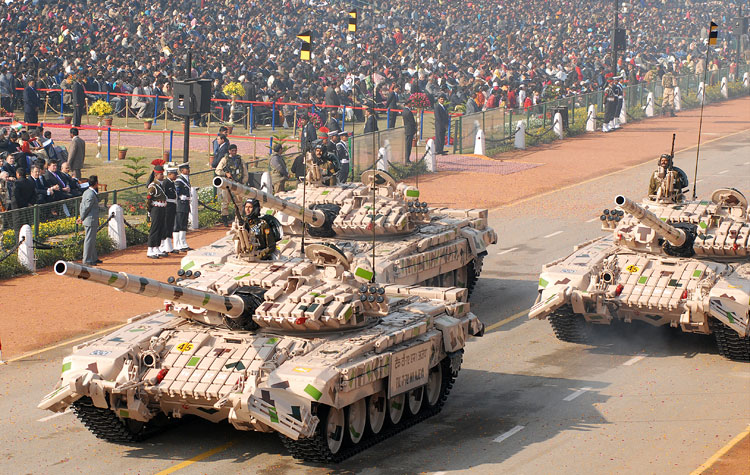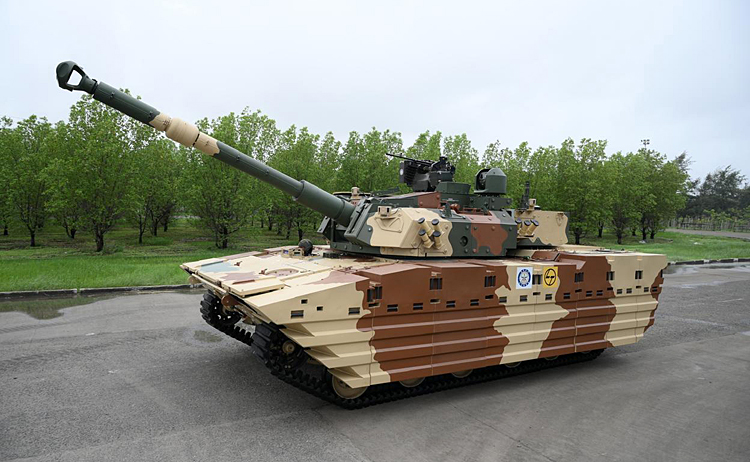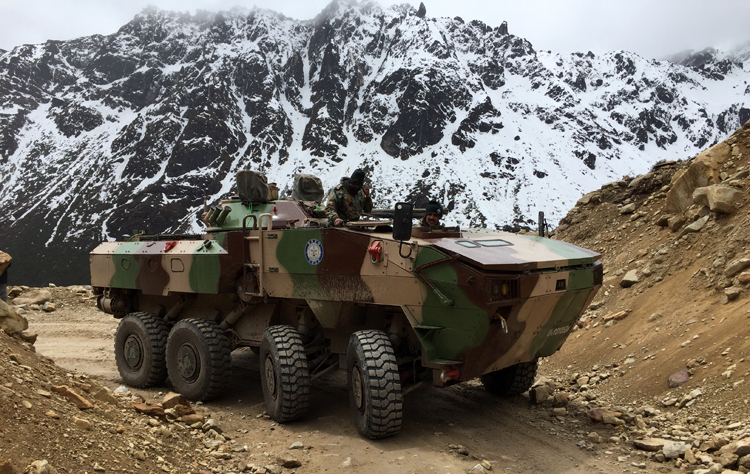INDIAN ARMED FORCES CHIEFS ON OUR RELENTLESS AND FOCUSED PUBLISHING EFFORTS

The insightful articles, inspiring narrations and analytical perspectives presented by the Editorial Team, establish an alluring connect with the reader. My compliments and best wishes to SP Guide Publications.

"Over the past 60 years, the growth of SP Guide Publications has mirrored the rising stature of Indian Navy. Its well-researched and informative magazines on Defence and Aerospace sector have served to shape an educated opinion of our military personnel, policy makers and the public alike. I wish SP's Publication team continued success, fair winds and following seas in all future endeavour!"

Since, its inception in 1964, SP Guide Publications has consistently demonstrated commitment to high-quality journalism in the aerospace and defence sectors, earning a well-deserved reputation as Asia's largest media house in this domain. I wish SP Guide Publications continued success in its pursuit of excellence.
- Operation Sindoor: Resolute yet Restrained
- India’s Operation Sindoor Sends a Clear Message to Terror and the World – ‘ZERO TOLERANCE’
- Japan and India set forth a defence cooperation consultancy framework, talks on tank and jet engines
- Terrorist Attack in Pahalgam in Kashmir: Unfolding a long surgical war against PAK
- Lt General Pratik Sharma takes over Command of Indian Army's Northern Command
Indian Army's T-72 Tank Fleet
India plans to modernise and export its older T-72 tanks, which have been in service for decades, to nations in Africa, the Middle East, and Asia, where there is continued demand for these reliable combat vehicles
 |
The Author is Former Director General of Information Systems and A Special Forces Veteran, Indian Army |

News reports in the recent past had indicated that the fleet of about 2,500 T-72 'Ajeya' tanks of the Indian Army may soon be phased out. Concurrent to this was the news about India focusing on its ambitious Future Ready Combat Vehicle (FRCV). Off-the-shelf procurement, followed by co-production of America's Stryker Infantry Combat Vehicle (ICV), Indian Army receiving the first batch of the Zorawar Light Tank (that can even be modified more, if at all required), and production of the Wheeled Armoured Platform (WhAP), also called TATA 'Kestrel' jointly developed by Tata Advanced Systems Limited (TASL) and the Defence Research and Development Organisation (DRDO) have been in the news.
India aims to introduce a new fleet of indigenous FRCVs by 2030, leading to the production of 1,770 FRCV, with the project having received the green signal. Some 70 percent of the funding for this programme will come from the Ministry of Defence (MoD). The first batch of Russian T-72 tanks arrived in India in 1976. Throughout the 1980s, India received additional T-72 tanks and set up a domestic production facility in 1984 at the Heavy Vehicle Factory in Avadi, Tamil Nadu Licensed production and enhancements continued into the 1990s.
The T-72 tanks, first introduced in India in the 1970s, have proven effective in various combat scenarios, including the 1999 Kargil Conflict and United Nations peacekeeping missions.
The T-72 tanks have proved their metal in all operations (including for internal security), since they were introduced in the late 1970s. Their subsequent development incorporated lessons learnt from the India-Pakistani War of 1971. The T-72 tanks were deployed during the 1999 Kargil Conflict. These tanks have also been used in numerous counter-insurgency operations, proving their adaptability in various combat scenarios. T-72 tanks have been actively involved in military exercises, including joint drills with other nations, showcasing their operational readiness and versatility. They have also been deployed in various United Nations peacekeeping missions, underscoring India's commitment to global peace and security.

India's T-72 Ajeya includes following technological upgrades over the Russian T-72 tanks received directly earlier: improved armour protection, modifications to the chassis for improved performance across various terrains; upgrade in the tank's engine and mobility, providing it with increased power and maneuverability; control systems have also been upgraded for more precise targeting and overall battlefield efficiency; improvements in communications and electronic systems, enabling better sharing of information and coordinate with other military units. All these upgrades, customised for local conditions, kept the T-72 Ajeya tanks effective and relevant to the battlefield environment.
Countries like Egypt, Iraq, Syria, Indonesia, and Myanmar have shown interest in acquiring modernised T-72 tanks to enhance their military capabilities
According to news reports of September 19, 2024, India is set to modernise and export its older T-72 tanks, which have served as its main battle tank (MBT) for decades. The plan is to upgrade these tanks domestically and offered to foreign buyers. Despite their age, these tanks are still considered highly reliable and continue to be in demand globally. Countries in Africa, the Middle East, and Far East Asia have expressed interest in acquiring the T-72, even as the Indian Army prepares to phase them out.
In Africa, nations like Egypt, Nigeria, and South Africa already possess similar platforms and would likely be keen on upgrading their tanks to enhance combat capability and operational effectiveness. In the Middle East, countries like Iraq and Syria could benefit from T-72 upgrades after years of conflict. In the Asia-Pacific, potential buyers include Indonesia and Myanmar, who are looking to bolster their military forces amidst rising geopolitical tensions in the region.
The upgrade of T-72 tanks will be carried out at the Heavy Vehicles Factory in Avadi, involving Indian and Russian technicians, enhancing firepower, protection, and mobility for contemporary battlefield needs
A senior official quoted in the media on September 23 said that plans to export the older T-72s are in place. He further said, "The tanks will undergo modernisation before being exported, allowing countries in Africa, the Middle East, and Southeast Asia to benefit from these combat vehicles." The overhaul of these tanks will be carried out at the Heavy Vehicles Factory in Avadi, the same facility that produced them under license before shifting to the T-90s in the 2000s. Indian and Russian technicians are reportedly collaborating to refurbish and upgrade a significant number of these decommissioned T-72 Ajeya tanks. The modernising plan is to involve enhancing the firepower, protection and mobility to meet contemporary battlefield requirements.

Upgrade and modernising tanks is an established practice world over. For example, America's M1 Abrams, Israel's Merkava tanks, South Korea's K1 tanks, Germany's Leopard tanks and the French Leclerc tanks are also undergoing modernisation programmes for effective adaptation of existing hardware and integration of new technologies, improved protection and communication systems, improving functionality through advanced sighting and fire control systems, and the like to meet evolving combat needs.
This decision aligns with India's broader strategy to promote defence exports and reduce dependence on foreign military equipment, positioning the country as a significant player in the global defence market
The decision to modernise and export T-72 tanks aligns with India's broader strategy of promoting defence exports and reducing its dependence on foreign military equipment. Modernised T-72 tanks provide a blend of reliability, cost-effectiveness, and proven combat performance. This makes them an appealing choice for nations aiming to strengthen their defences without investing in new, more expensive platforms. By positioning itself in this niche, India could emerge as a significant player in the international market against the backdrop of growing competition, especially in defence.





